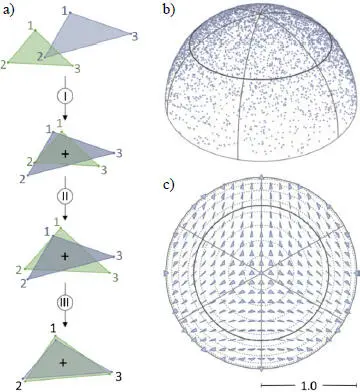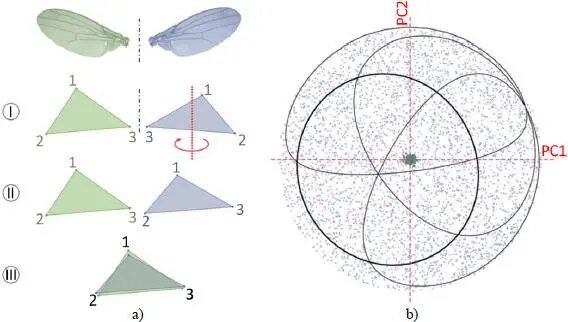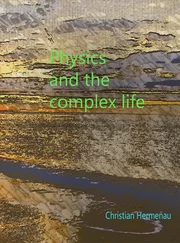Systematics and the Exploration of Life
Здесь есть возможность читать онлайн «Systematics and the Exploration of Life» — ознакомительный отрывок электронной книги совершенно бесплатно, а после прочтения отрывка купить полную версию. В некоторых случаях можно слушать аудио, скачать через торрент в формате fb2 и присутствует краткое содержание. Жанр: unrecognised, на английском языке. Описание произведения, (предисловие) а так же отзывы посетителей доступны на портале библиотеки ЛибКат.
- Название:Systematics and the Exploration of Life
- Автор:
- Жанр:
- Год:неизвестен
- ISBN:нет данных
- Рейтинг книги:3 / 5. Голосов: 1
-
Избранное:Добавить в избранное
- Отзывы:
-
Ваша оценка:
- 60
- 1
- 2
- 3
- 4
- 5
Systematics and the Exploration of Life: краткое содержание, описание и аннотация
Предлагаем к чтению аннотацию, описание, краткое содержание или предисловие (зависит от того, что написал сам автор книги «Systematics and the Exploration of Life»). Если вы не нашли необходимую информацию о книге — напишите в комментариях, мы постараемся отыскать её.
Systematics and the Exploration of Life — читать онлайн ознакомительный отрывок
Ниже представлен текст книги, разбитый по страницам. Система сохранения места последней прочитанной страницы, позволяет с удобством читать онлайн бесплатно книгу «Systematics and the Exploration of Life», без необходимости каждый раз заново искать на чём Вы остановились. Поставьте закладку, и сможете в любой момент перейти на страницу, на которой закончили чтение.
Интервал:
Закладка:
Geometrically, the morphological variation in a sample of biological shapes exhibiting a symmetric arrangement can thus be decomposed into symmetric and asymmetric variations. There is only one way to be perfectly symmetric with respect to the symmetry group of the considered structure (this is the case when all the isometries of the group are respected), but there are one less many ways to deviate from perfect symmetry as there are isometries in the group. Thus, the total variation always includes one symmetric component and at least one asymmetric component. Geometric morphometrics offers mathematical and statistical tools to quantify and explore this empirical variation.
1.5. Principles of geometric morphometrics
We are limiting ourselves here to the morphometric framework, in which the morphology of a biological structure is described by a configuration of p landmarks (Bookstein 1991; Rohlf and Marcus 1993; Adams et al . 2004). These landmarks, ideally defined on anatomical criteria, must be recognizable on all n specimens of the sample. Their digitization in k = 2 or 3 dimensions (depending on the geometry of the object considered) provides a description of each specimen as a series of pk coordinates. The comparison of the two or more objects thus characterized is done by superimposing their landmark configurations. The method most commonly used today is the Procrustes superimposition (Dryden and Mardia 1998). The underlying idea is that the shape of an object can be formally defined as the geometric information that persists once it is freed from differences in scale, position and orientation (Kendall 1984). These non-informative differences in relation to the shape are eliminated by scaling, translation and rotation, so as to minimize the sum of the squared distances between homologous landmarks ( Figure 1.2). The residual variation provides a measure of the shape difference between the two objects, the Procrustes distance , which constitutes the metric of the shape space . In this space, each point corresponds to a shape, and two shapes are all the more similar, the smaller the Procrustes distance is between the points that represent them.

Figure 1.2. Principles of geometric morphometrics illustrated for the simple case of triangles (three landmarks in two dimensions). For a color version of this figure, see www.iste.co.uk/grandcolas/systematics.zip
COMMENT ON FIGURE 1.2.– a) Two objects described by homologous configurations of landmarks are subjected to three successive transformations eliminating the differences in position (I), scale (II) and orientation (III), in order to extract a measure of their shape difference: the Procrustes distance. b) The Procrustes distance is the metric of the shape space, a non-Euclidean space in which each point corresponds to a unique shape. In applied morphometrics, researchers work with a space related to the shape space called the Procrustes (hyper)hemisphere. c) The non-linearity of this space requires projecting data onto a tangent space before testing biological hypotheses by using traditional statistical methods.
Empirical applications of morphometrics are generally carried out in another space, the Procrustes (hyper)hemisphere, mathematically linked to the shape space, and efficiently estimating distances between shapes when the studied morphological variation is small compared to the possible theoretical variation (which is the case for biological applications). The shape space and the Procrustes hemisphere have non-Euclidean geometries and, for practical reasons (the application of standard statistical methods), the distribution of objects in either of these spaces is approximated by their distribution in a tangent space of the space under consideration, at the point corresponding to the mean shape of the sample (see Dryden and Mardia (1998) for more details).
1.6. The treatment of symmetry in morphometrics
Beyond their classical applications in systematics, paleontology, ecology and evolution, geometric morphometric methods have been extended over the last two decades to the analysis of the symmetry of shapes (Klingenberg and McIntyre (1998) and Mardia et al . (2000), and see Klingenberg (2015) for a review). As mentioned above, it is then possible to decompose the measured morphological variation into symmetric and asymmetric components, capturing the effects of distinct biological processes. When considering the symmetric organization of biological structures, two classes of symmetry are recognized by morphometricians: matching symmetry and object symmetry (Mardia et al . 2000; Klingenberg et al . 2002).
Matching symmetry describes the case where the repeated units that give the biological structure its symmetric architecture are physically disconnected from each other. This is, for example, the case for diptera wings that are attached individually to the second thoracic segment (bilateral symmetry with respect to the median plane of bilaterians), or for the arrangement of petals in many flowers (rotational symmetry). A configuration of landmarks is defined for the repeated unit (e.g. the wing) and digitized for all units (right and left wings). The configurations are then oriented in a comparable way (reflection of the left wings, so that they can be superimposed on the right wings) and analyzed using the Procrustes method ( Figure 1.3(a)). In the shape space, a sample of n structures made up of m repeated units appears as m clouds of n points, whose relative overlap indicates the degree of symmetry of the structure. The more the repetition of the units is faithful to the symmetry group, the closer the different units of the same structure are and the more the clouds overlap ( Figure 1.3(b)).

Figure 1.3. Morphometric analysis of matching symmetry. For a color version of this figure, see www.iste.co.uk/grandcolas/systematics.zip
COMMENT ON FIGURE 1.3. – a) In the case of bilateral symmetry (the shape is likened to a triangle to facilitate visualization), the unit on one side (blue) is reflected (I) to match its landmark configuration with that of the same unit on the other side (green) (II). The original and reflected units of all the individuals in the sample are then superimposed by the Procrustes method. b) Each individual is then defined by two points in the tangent space corresponding to each of its repeated units. The relative position of the points and clouds of points representing the two sides (blue and green here) describes the degree of deviation from perfect bilateral symmetry at the individual and sample levels. A principal component analysis allows the visualization of the tangent space with a reduced number of dimensions.
In the case of object symmetry, the symmetry operator is an integral part of the biological structure. The m repeated units are thus physically connected and their relative arrangement intervenes in the emergence of the symmetric pattern of the structure. This is, for example, the case for the right and left halves of the human face (bilateral symmetry with respect to the median plane passing through the skull) or for the arms of the starfish (rotational symmetry with respect to the antero-posterior axis passing through the center of the body). For object symmetry, a single configuration of landmarks is defined for the whole structure (and not one for each unit as in the case of matching symmetry). If q is the number of isometries of the symmetry group of the structure, then q copies of the configuration are created and transformed accordingly. All of the configurations and their copies are then superimposed ( Figure 1.4(a)). In the shape space, a sample of n structures appears as q clouds of n points, where the relative overlap of the copies reflects the precision of the symmetric pattern of the structure ( Figure 1.4(b)).
Читать дальшеИнтервал:
Закладка:
Похожие книги на «Systematics and the Exploration of Life»
Представляем Вашему вниманию похожие книги на «Systematics and the Exploration of Life» списком для выбора. Мы отобрали схожую по названию и смыслу литературу в надежде предоставить читателям больше вариантов отыскать новые, интересные, ещё непрочитанные произведения.
Обсуждение, отзывы о книге «Systematics and the Exploration of Life» и просто собственные мнения читателей. Оставьте ваши комментарии, напишите, что Вы думаете о произведении, его смысле или главных героях. Укажите что конкретно понравилось, а что нет, и почему Вы так считаете.












